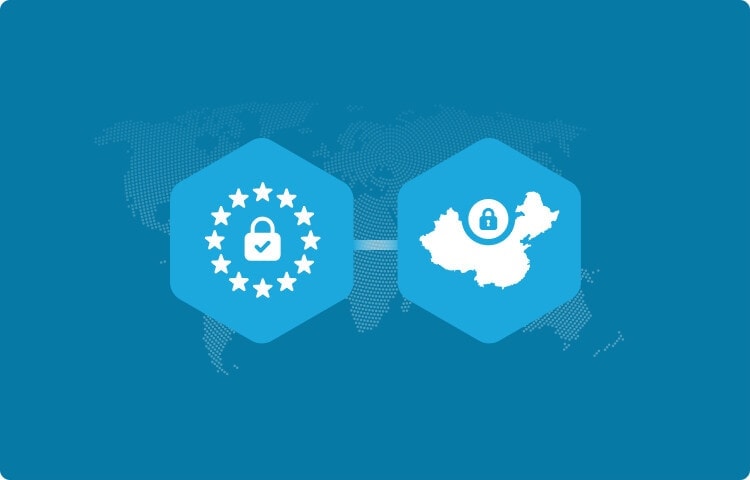Unveiling Rule 14: The Game-Changer In National Security And Digital Privacy
How Rule 14 Empowers India to Regulate Cross-Border Data Transfers for Privacy and Security

An essential step in the direction of data sovereignty and national security was taken on January 3, 2025, with the announcement of the draft regulations of the Digital Personal Data Protection (DPDP) Act, rule 14 by the Indian government. These regulations give the central government the authority to regulate, restrict, or even prohibit the transfer of personal information to other countries, organizations, or individuals. Since the government is now seeking public comments until February 18 for these proposed regulations, this project has been a lightning rod for people to discuss data protection, privacy, and sovereignty.
Overview of the DPDP Act and Draft Rules
The DPDP Act provides for an overall regime regarding personal data handling. Advocating for personal privacy does go in tandem with national interests imperative. One of the most crucial provisions relates to Rule 14, which held it permissible for the central government to restrict the cross-border data flow. This permits the government to regulate transfers of personal data to any other country beyond India, depending upon national security, sovereignty, and privacy considerations.
Key Features of Rule 14
Rule 14 states explicitly that data transfers to any foreign country, entity, or individual will be subject to general or special orders issued by the Central government. The rule provides the flexibility to:

- Apply restrictions on transfer.
- Completely bar transfers to a particular country, entity or even person.
- Issue notifications or orders without predefining a list of blocked countries or regions.
This approach ensures the government retains discretionary power to respond to emerging threats or concerns in real-time.
Basis for Restrictions
Although Rule 14 does not elucidate when restraints would come into effect, the DPDP Act has dealt with this position clearly in Section 17(2). It mentions that the government can impose restrictions on cross-border data transfers based on the following factors:
- Concerns about national security.
- Threats to the sovereignty or integrity of the State.
- Privacy risks to individuals.
This means that government decisions can be strategic, security-related, or based on privacy issues, and thus, it is an all-around safeguarding mechanism.
Implications for Businesses
The new draft rules suffuse Indian and international organizations that practice in India. These organizations under the DPDP Act are Data Fiduciaries that process personnel to adhere to government orders on data transfer about these organizations. This entails compliance with the following:

Cross-border data transfer that complies with:
- The government’s specific orders or restrictions.
- Algorithms and processing methods that do not pose risks to users’ privacy or security.
For businesses, this provides a level of regulatory compliance related to data transfer that should be robust enough to handle transfers and point to law compliance.
How Rule 14 Strengthens National Security
Data sovereignty is the new national security issue of the digital age. Through regulation of data transfer, the government will:
- Prevent Data Misuse: Restricting transfers to specific nations or entities prevents the misuse of sensitive personal data.
- Control Strategic Information: The prohibition of data transfers ensures that strategic information does not leave the country’s borders.
- Ensure Privacy: It will protect privacy since the government examines algorithms and processing techniques to lower privacy threats.
This legal structure follows the global trend, as China and the EU impose strict data localization and protection regulations.

Flexibility in Implementation
One of the features of Rule 14 is flexibility. Unlike some of the global rules, which include a list of proscribed countries, the DPDP rules are given the flexibility by the government to:
- Dynamically adapt to changing geopolitical and technological scenarios.
- The Act responds to and addresses issues as and when they evolve and emerge.
- Respond promptly to the threat of data breach or misuse by foreign parties.
This adaptability positions the DPDP Act as a modern and responsive regulatory framework.
Industry Response and Concerns
Although the draft rules have shown openness towards security and sovereignty orientation, much has been debated by the business and tech communities. Some of the major concerns include:
- Operational Challenges: Due to the increased management of cross-border data transfer, companies and firms will incur more compliance and operations costs.
- Impact on Innovation: Restrictions in innovation for small-scale entrepreneurs, tech, or startup businesses in their pursuit and implementation of globalization of data
- Uncertainty: There are no preset lists or ideas regarding banned countries where a long-term data strategy should not be placed.
Comparing the DPDP Rules with Global Standards
DPDP Rules are equivalent to international norms, such as GDPR in Europe and PIPL in China.

- GDPR: Similar to the GDPR’s mechanisms for cross-border data transfers, the DPDP rules emphasize individual privacy and security. However, unlike the DPDP’s dynamic model, the GDPR’s approach includes predefined ‘adequacy decisions’ for approved nations.
- PIPL: China’s PIPL is very local regarding government approval required for data exports. DPDP rules are comparatively more restrictive but less severe than those of China’s localization.
Public Consultation and Feedback
This reflects the government’s approach toward openness and inclusiveness. Hence, it has sought public comments on the draft rules by February 18. The draft rules are open to stakeholders from business, legal, and privacy advocates. This consultation process should:
- Ensure that the regulation balances security with innovation.
- Address industry-specific issues to foster compliance.
Future Outlook
The draft DPDP rules are an essential milestone on India’s road to comprehensive data protection. Through the rules, the government seeks to empower itself to regulate cross-border data flows to:
- Strengthen data sovereignty.
- Improve personal privacy.
- Protect national security.
But successful implementation would require:
- Clear rules on the grounds on which the restrictions are based are needed.
- Vigorous enforcement and compliance mechanisms.
- The government, businesses, and civil society must cooperate to deal with emerging challenges.
When the government finalizes steps, it will be up to protect national interests without clogging innovation and growth.

Conclusion
The Draft Rules of the DPDP Act reflect how the Indian State takes data protection seriously in matters of privacy and national security. Rule 14 is flexible and complements Section 17(2) so that the Indian government can easily regulate cross-border data flows without slowing down innovation. The consultation shall frame the country’s future data protection and digital governance visions. It would be difficult for people and businesses to adapt to this data privacy and security change.




